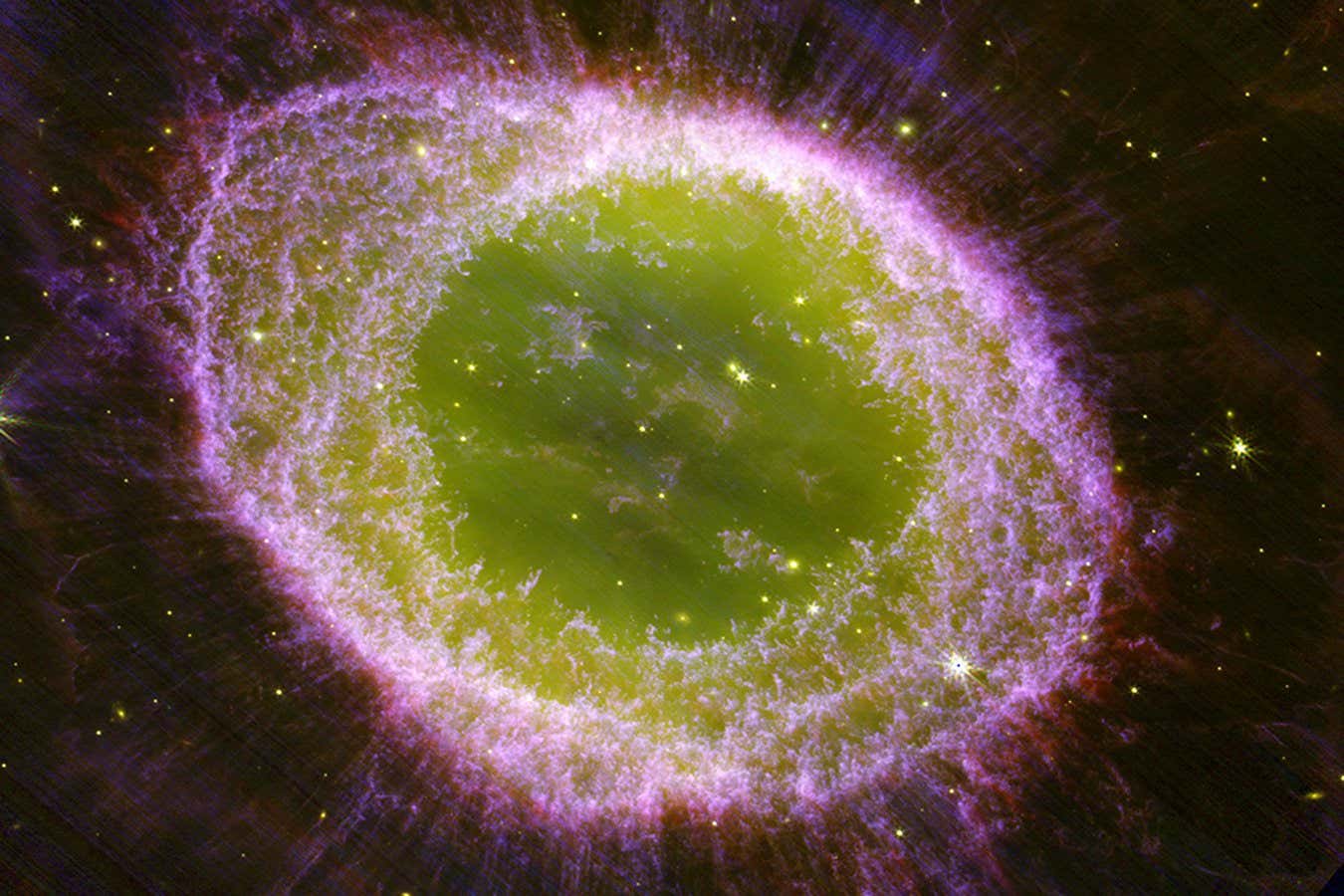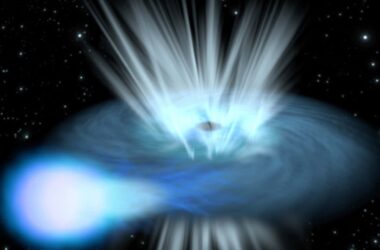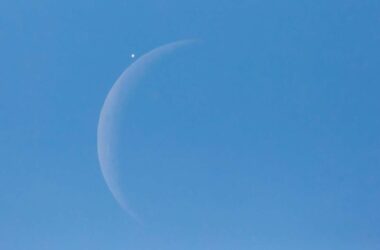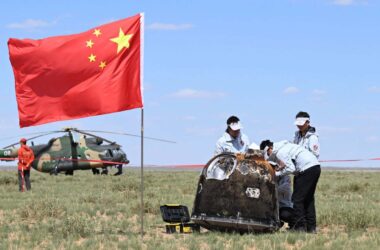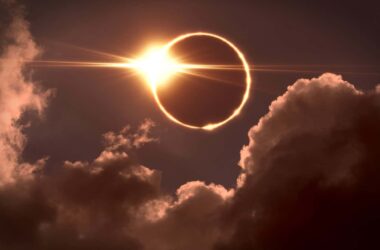The James Webb Space Telescope (JWST) has captured a breathtaking image of the Ring Nebula, displaying its intricate details like never before.
The Ring Nebula, located around 2600 light years away in the constellation Lyra, is a planetary nebula formed when a dying star sheds its outer layers, creating a shroud of gas and dust.
Remarkably, the orientation of the Ring Nebula allows us to view it face-on from Earth. The central dead star is surrounded by a ring of bright nitrogen and sulfur, with the entire structure enveloped in a greenish tint due to the passage of the star’s light through oxygen gas.
Professor Mike Barlow at University College London described it as “the final chapters of a star’s life” and sees it as a “preview of the sun’s distant future.” The Ring Nebula serves as a laboratory for scientists to study how planetary nebulae form and evolve.
The internal dynamics of the Ring Nebula and similar objects are incredibly complex, with dense gas knots, wispy clouds, and gauzy bubbles interacting in ways that are not yet fully understood. The new observations from the JWST provide unprecedented detail of the area surrounding the star, aiding researchers in unraveling its mysteries.
The observations also reveal insights into the nebula’s chemical composition. Els Peeters from the University of Western Ontario remarked that they discovered large carbonaceous molecules within the nebula, which raises questions about how they formed. This finding suggests that the chemical processes within planetary nebulae are as intricate as the physical ones.
Insights:
- The JWST’s image of the Ring Nebula showcases its intricate details like never before.
- The Ring Nebula is a planetary nebula located around 2600 light years away in the constellation Lyra.
- The Ring Nebula provides a unique opportunity to study how planetary nebulae form and evolve.
- The internal dynamics of the Ring Nebula are complex and not yet fully understood.
- The JWST’s observations provide unprecedented detail of the area surrounding the star in the Ring Nebula, aiding researchers in understanding its workings.
- The chemical composition of the Ring Nebula includes large carbonaceous molecules, posing questions about their formation and the intricate chemical processes within planetary nebulae.




